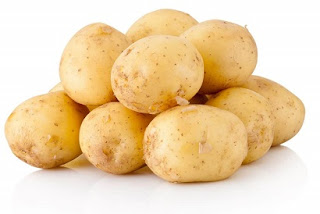Foods that fill you up
Ever eat a meal and in no time at all you are hungry again? My students often ask why sometimes they eat a meal and shortly after they are hungry? But sometimes they eat a meal and they are hungry hours later. Why do some meals fill you up and keep you feeling full for hours, yet other meals or food seem to leave you with an empty stomach not long after you eat?
One reason is that some foods are digested rapidly and some foods take much longer to digest. Some foods seem to fill you up and leave you feeling satiated. What is satiated? The book I use to teach nutrition, defines “satiety” as “the feeling of fullness and satisfaction that occurs after a meal and during eating. Satiation determines how much food is consumed during a meal.”
The Satiety Index
My daughter sent me an article on the Satiety Index that rates different foods as to how full they make you feel after a meal. Susanna Holt, PhD from Australia, developed this index as a way to determine how foods satisfy your hunger. She had people eat 240 calories worth of 38 different foods and then every 15 minutes had them report how hungry they felt after eating the different foods.
Can you guess what food ranks the highest in satiety? I am not surprised as it is one of my favorite foods – potatoes. “Of all the foods tested, potatoes were the most satisfying”. We often serve baked potatoes at meals and almost every time either my husband or I comment on how filling potatoes are.
 |
| Potatoes fill you up. |
Interesting that Holt used white bread as her baseline and gave it a score of 100. Foods that were more filling than white bread earned a score higher than 100 and foods less filling than white bread earned scores less than 100.
Some findings were quite interesting. We learn in nutrition class that fat has lots of calories and one would think that would fill you up. But fat is a weakling when it comes to satiation. You eat a meal high in fat and one would think it would make you feel full, but just the opposite, you may not feel full and overeat as a result. Holt found that boiled potatoes (low in fat) have a high satiety index, 3 times that of white bread. But French fries – which are high in fat, have a lower satiety index. Probably the opposite of what one would expect. So, eat boiled potatoes and you will feel fuller than eating some high fat French fries.
We also learn in class that foods high in fiber fill you up. High fiber foods stay in your stomach longer, resulting in a feeling of fullness. Protein foods are another food that stays with you longer, also creating a feeling of fullness. The nutrition book recommends drinking some real milk at meals as real milk has protein that will help you feel full and satiated. The satiety index confirms both principles as Holt notes, “Roughly speaking, the more fiber, protein and water a food contains, the longer it will satisfy.”
Here are some of other findings:
- Fruit – especially whole fruit ranks 1.7 times more
filling than white bread. One would not
think so since fruit has the simple carb, fructose, in it. But whole fruit also has fiber which fills
you up and stays in your stomach longer.
- Cereal – choose whole grain cereals like any General Mills cereal or oatmeal as whole grains would be more satisfying than refined grain cereals.
Holt gives some meal advice to dieters or those who are health conscious:
- Rice cakes and fruit – may seem healthy but eating this “meal” will result in hunger shortly after eating. The meal is low in fat but also low in protein and won’t keep hunger at bay.
- Sandwich on whole grain bread and an apple – the sandwich should have protein – meat, tuna, or cheese. The protein would keep hunger at bay longer. Whole grains and the apple have fiber to delay stomach emptying and protein in the sandwich stays with you longer. According to Holt, “This kind of meal can keep hunger at bay for a very long time”.
This week when you are planning snacks or meals, think about the “satiety index” and be sure your meals or snacks have some high-quality protein such as real milk, cheese, yogurt, lean meat, or tuna. And add in some foods with fiber – fresh fruit, fresh vegetables, and whole grain bread, whole grain cereal or whole grain crackers.
Interesting that sometimes only small changes are needed to eat healthier. Students in my class are required to keep 24-hour diet recalls listing all food and beverages eaten in a 24-hour period. One student had some Ritz crackers for a snack. Changing those Ritz crackers to Ritz Whole Wheat crackers and adding some cheese would have made for a higher “satiety index” snack and a healthier snack. Another student drank some fruit punch for a snack and thought this was a serving of fruit. In actuality, the fruit punch contained no fruit or fruit juice at all. If that student had a snack of an apple and some yogurt, they would have a healthier snack and one with a higher “satiety index”.

Choose whole grain crackers and add some fiber to your day.
How can you raise your “satiety index” this week and eat meals and snacks that fill you up and keep you feeling full longer?
Sources: book , Satiety Index , notes , According , Ritz Whole Wheat crackers Image sources: Satiety Index , Ritz crackers , Potatoes




Comments
Post a Comment